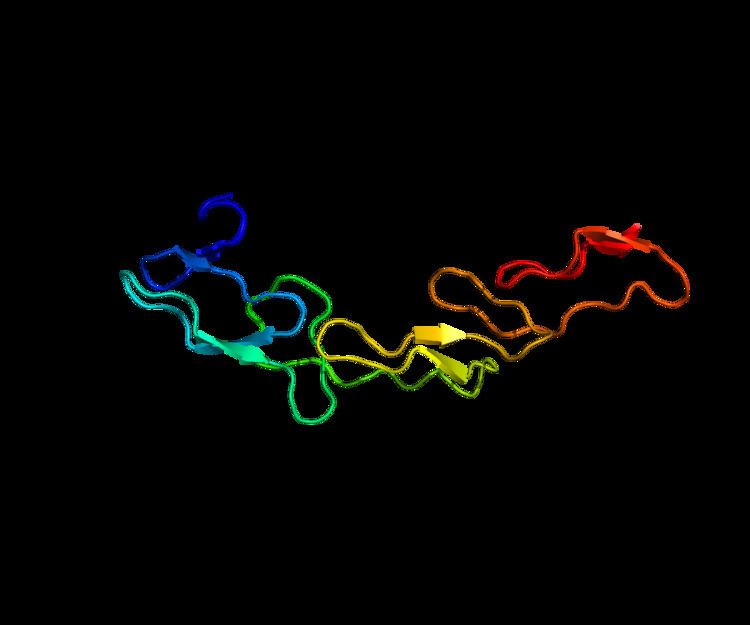Entrez 958 | Ensembl ENSG00000101017 | |
 | ||
Aliases CD40, Bp50, CDW40, TNFRSF5, p50, CD40 (protein), CD40 molecule External IDs MGI: 88336 HomoloGene: 954 GeneCards: CD40 | ||
Cluster of differentiation 40, CD40 is a costimulatory protein found on antigen presenting cells and is required for their activation. The binding of CD154 (CD40L) on TH cells to CD40 activates antigen presenting cells and induces a variety of downstream effects.
Contents
Deficiency can cause Hyper-IgM syndrome type 3.
Function
The protein receptor encoded by this gene is a member of the TNF-receptor superfamily. This receptor has been found to be essential in mediating a broad variety of immune and inflammatory responses including T cell-dependent immunoglobulin class switching, memory B cell development, and germinal center formation. AT-hook transcription factor AKNA is reported to coordinately regulate the expression of this receptor and its ligand, which may be important for homotypic cell interactions. The TNFR-receptor associated factor adaptor proteins TRAF1, TRAF2, TRAF6 and possibly TRAF5 interact with this receptor serve as mediators of the signal transduction. The interaction of this receptor and its ligand is found to be necessary for amyloid-beta-induced microglial activation, and thus is thought to be an early event in Alzheimer disease pathogenesis. Two alternatively spliced transcript variants of this gene encoding distinct isoforms have been reported.
Specific effects on cells
In the macrophage, the primary signal for activation is IFN-γ from Th1 type CD4 T cells. The secondary signal is CD40L (CD154) on the T cell which binds CD40 on the macrophage cell surface. As a result, the macrophage expresses more CD40 and TNF receptors on its surface which helps increase the level of activation. The increase in activation results in the induction of potent microbicidal substances in the macrophage, including reactive oxygen species and nitric oxide, leading to the destruction of ingested microbe.
The B cell can present antigens to helper T cells. If an activated T cell recognizes the peptide presented by the B cell, the CD40L on the T cell binds to the B cell's CD40 receptor, causing resting B cell activation. The T cell also produces IL-2, which directly influences B cells. As a result of this net stimulation, the B cell can undergo division, antibody isotype switching, and differentiation to plasma cells. The end-result is a B cell that is able to mass-produce specific antibodies against an antigenic target. Early evidence for these effects were that in CD40 or CD154 deficient mice, there is little class switching or germinal centre formation, and immune responses are severely inhibited.
The expression of CD40 is diverse. CD40 is constitutively expressed by antigen presenting cells, including dendritic cells, B cells and macrophages. It can also be expressed by endothelial cells, smooth muscle cells, fibroblasts and epithelial cells. Consistent with its widespread expression on normal cells, CD40 is also expressed on a wide range of tumor cells, including non-Hodgkin's and Hodgkin's lymphomas, myeloma and some carcinomas including nasopharynx, bladder, cervix, kidney and ovary. CD40 is also expressed on B cell precursors in the bone marrow, and there is some evidence that CD40-CD154 interactions may play a role in the control of B cell haematopoiesis.
Interactions
CD40 (protein) has been shown to interact with TRAF2, TRAF3, TRAF6, TRAF5 and TTRAP.
